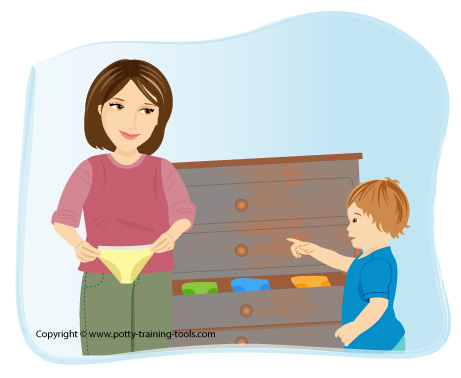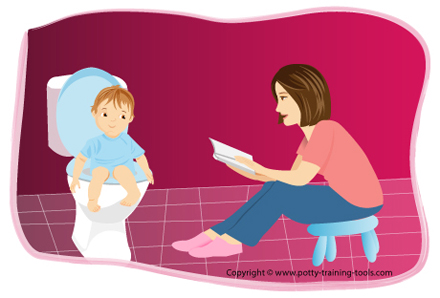Toilet Training Equipment:
Essential and Optional
Getting equipped for potty training
Which toilet training equipment (other than a toilet) should be in the house when starting potty training?
I’ve attempted to list the items by order of necessity. As this would be subjective -- it is only my view, but the idea was to list the more "basic" items at the top.
[A quick clarification: This is not a review of specific products/brands -- rather a report about types of products.]
(1) The Actual “Training Device”…
Many brands / products under this category, but the main two different-concepts are:
-
Toilet Training Seats (also: Toilet Trainers)
A Toddler Potty Chair is a seat of its own, which is not attached to the actual toilet.
Toilet Training Seats or Toilet Trainers, are attached to the toilet, fitted to a toddler’s buttocks’ size, and usually come with a built-in step stool that allows kids to climb and sit by themselves.
To read about the advantages and disadvantages of Potty-Training vs. Toilet-Training, visit this page.
(2) Little Boy’s or Girl’s Underpants
Underpants is essential toilet training equipment, and moreover: Can also be used as a motivator.
It’s easy to get kids excited about wearing underpants for the first time (“big boy’s underpants”…), and even more so if we’re letting them pick for themselves. This could really give them a sense of ownership on the process.
Even if you don’t plan on buying new underpants for your kid (you may have enough left in good shape from your former potty-trainee...) – I’d still recommend “making a big-deal” out of it (proportionally, though) and letting your child pick his favorite pair during the first few days.

(3) Step Stool
If you’ve chosen a Toilet Trainer that comes with built-in “steps” then you’ve got that part covered.
But it may still be a good idea to have a small Step-Stool, one that is not attached to a Toilet Training Seat, positioned near the sink to help your child reach it when washing his hands after potty-breaks.
(Another step towards independence AND learning habits of personal hygiene.)
(4) Decent amount of cloths for change
If you’re the kind of parent who usually prefers frequent-laundries over stock-of-cloths, now may be the time to challenge this preference.
(5) Potty training mattress covers
Generally, I’m from the school that says Nighttime potty training should NOT start in parallel to Daytime potty training, but… these are not just for the night:
Potty training mattress covers can be used to protect the sofas during the first few days, when your child is still learning.
(6) Potty training books (or DVDs) for children
Books can be a good way to introduce the concept of toilet training to toddlers, if you feel that this could be beneficial. It is absolutely OK to potty train without reading any related-books to your child, but ultimately, books are FUN… so why not?
When it comes to potty training books, my two-cents are:
Read them to introduce the idea, to make your child aware and curious about potty training, or read them for pure fun. However, do not count on books to potty-train your child for you.

(7) Potty training dolls
I have the same thoughts for potty training dolls as I do for potty training books.
(8) Portable (travel) Potty
There are products that provide solution to the traveler potty-trainee and his/her parents.
These have no use inside the house (that I would recommend), but I can definitely see the advantages for traveling, when toilet facilities come short.
(9) Not recommended: Potty Training Pants or “Pull-Ups”
My view on those is -- in general -- nothing against specific product: Don’t train with them.
By absorbing it gives the same sensation as diapers, so I personally don’t see how it could count as potty training.
This sums up our toilet training equipment Brief.
Return from Toilet Training Equipment to
How to Start Potty Training
Return from Toilet Training Equipment to
Potty Training Tools Home page